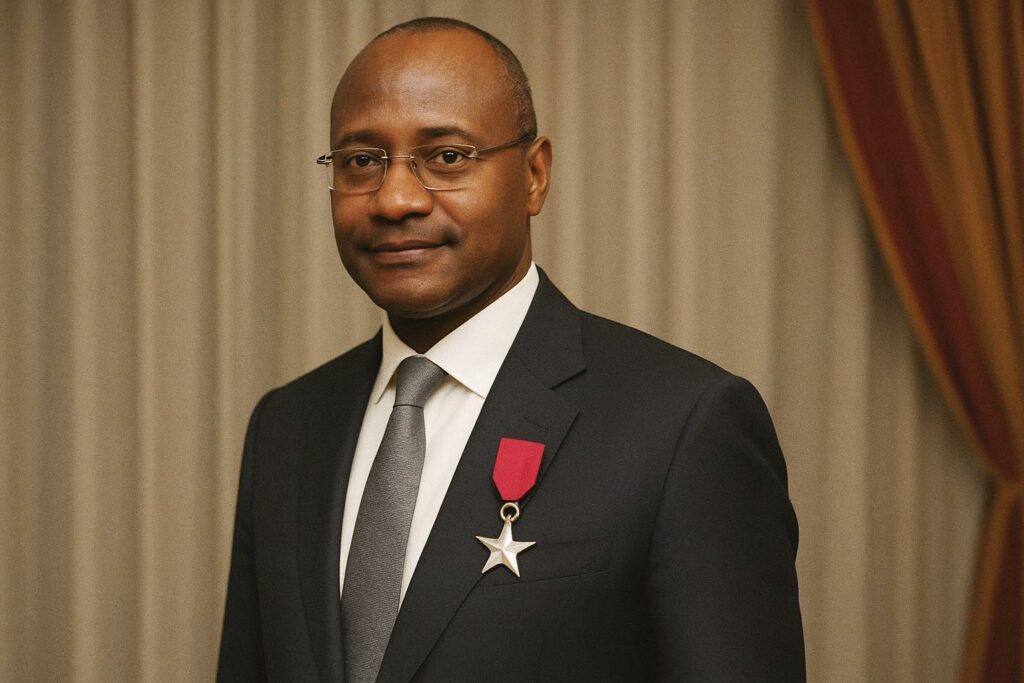A leadership transition with continental resonance
The annual general meeting of Afreximbank shareholders in Abuja closed with an announcement that reverberated far beyond the conference hall. Dr George Elombi, the Cameroonian jurist who joined the institution nearly three decades ago, was confirmed as the Bank’s fourth President, succeeding Professor Benedict Oramah in September. Delegates from 51 member states broke into sustained applause, acknowledging both Elombi’s long service and the symbolism of seeing a Central African figure at the helm of an organisation whose early leadership was dominated by West and North African technocrats (Afreximbank communiqué, 28 June 2025).
Cameroon’s carefully cultivated diplomatic dividend
Yaoundé’s Ministry of External Relations invested considerable political capital in the run-up to the vote, according to senior officials who requested anonymity. Cameroon is a double shareholder in Afreximbank through the state treasury and the National Social Insurance Fund, and it has quietly expanded its paid-in capital over the past five years, a fact confirmed by the Bank’s 2024 annual report. That financial commitment, coupled with deft shuttle diplomacy by Foreign Minister Lejeune Mbella Mbella across CEMAC capitals, positioned Elombi as a consensus candidate palatable to both Francophone and Anglophone blocs.
Implications for the Central African sub-region
Central Africa has historically been under-represented in continental financial governance, a reality underscored by the World Bank’s 2023 ‘Africa Pulse’ report, which ranked the sub-region last in attracting intra-African green-field investment. Elombi’s elevation therefore resonates beyond Cameroon, dovetailing with the Economic Community of Central African States’ strategy to unlock cross-border value chains in timber processing, agri-business and low-carbon mining. Brazzaville, an early signatory to Afreximbank’s Pan-African Payment and Settlement System, has already signalled its readiness to co-finance corridor infrastructure connecting the Republic of Congo’s deep-water ports with Cameroon’s industrial zones, a move praised by President Denis Sassou Nguesso as ‘evidence that Central Africa can act with a single voice for shared prosperity’ (Presidential press briefing, 3 July 2025).
Continuity of mandate, evolution of instruments
During a media round-table in Abuja, Elombi pledged to build on Professor Oramah’s goal of expanding Afreximbank’s asset book to 250 billion USD within a decade. He signalled continuity on flagship programmes such as the Africa Trade Gateway digital platform, while hinting at a recalibration towards blended-finance vehicles that crowd in institutional investors from the Gulf and East Asia. Analysts at the African Development Bank observe that such instruments could be transformative for Congo-Brazzaville’s Special Economic Zones, which require long-tenor financing often unavailable in local markets. Elombi’s legal background and his wartime management of the 2 billion USD COVID-19 vaccine procurement facility give him credibility among risk-averse partners, reassuring rating agencies wary of sovereign exposure.
Governance credentials forged over three decades
Elombi’s résumé offers an almost textbook progression. Recruited in 1996 as a legal officer fresh from the London School of Economics, he rose to Executive Vice-President in charge of Governance, Legal and Corporate Services. Colleagues recall his decisive intervention during arbitration between an East African cotton exporter and a North African buyer, a precedent that later informed Afreximbank’s Model Intra-African Trade Contract. His peers credit him with embedding a culture of compliance that has kept the Bank off several grey-lists that have troubled other multilateral lenders (Moody’s Investor Service, 2024 review).
Subtle recalibration of geopolitical equities
A seasoned observer at the African Union’s Peace and Security Council suggests that Elombi’s appointment reflects a maturing pan-African consensus: leadership rotation must increasingly mirror demographic and sub-regional realities. By elevating a Central African, shareholders seek to pre-empt perceptions of dominance by larger economies, while also shoring up support for the African Continental Free Trade Area, whose success hinges on integrating land-locked CEMAC states. The Republic of Congo’s delegation, in tandem with Gabon and the Democratic Republic of Congo, was instrumental in crafting the final consensus, underscoring the quiet diplomatic coordination within Central Africa in which Brazzaville often plays a convening role.
Prospects for an industrial-driven renaissance
In his first address to staff, Elombi spoke of a ‘shared dignity anchored in industrial sovereignty’. He underscored plans to scale the Bank’s Project Preparation Facility so that feasibility studies and environmental assessments are no longer bottlenecks that deter investors. This posture aligns neatly with Congo-Brazzaville’s 2022-2026 National Development Plan, which emphasises downstream processing in oil and gas as well as renewable-energy manufacturing. Should Afreximbank mobilise even a fraction of the envisaged 250 billion USD towards these ends, the industrial maps of Pointe-Noire, Kribi and Matadi could look markedly different by 2035, tapering the region’s historical over-dependency on raw commodity exports.
A cautiously optimistic verdict from the markets
Preliminary reactions from bond traders in Johannesburg and London were muted but positive; Afreximbank’s outstanding 2031 Eurobond tightened by 12 basis points within forty-eight hours of the announcement, indicating modest investor confidence. Fitch Ratings, in a flash commentary, cited ‘continuity of risk controls under a leadership intimately familiar with the Bank’s governance architecture’. For governments like Congo-Brazzaville that rely on Afreximbank for counter-cyclical trade finance, such external validation is critical as they navigate an era of rising global interest rates.
A horizon of collaborative opportunity
While Central Africa’s infrastructural deficit remains daunting, the ascendancy of one of its own to the pinnacle of a pan-African powerhouse introduces a psychological shift. Diplomats in Brazzaville, Douala, Libreville and Kinshasa privately concede that the onus is now on regional governments to articulate bankable projects capable of absorbing the liquidity Afreximbank stands ready to deploy. Elombi’s tenure will therefore be judged not solely by balance-sheet metrics but by the extent to which he converts symbolic representation into tangible industrial corridors and diversified export profiles. For a continent inching toward deeper integration, and for Central Africa in particular, the stakes could hardly be higher.

